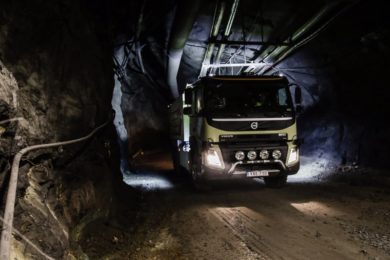Boliden has decided to invest SEK1,250 million ($150 million) in expanding the Kristineberg underground copper-zinc mine towards the Rävliden mineralisation. Most of the investment is conditional on a permit being received for an increase in production. The expansion is expected to contribute to an increase in milled volumes in the Boliden Area to 1.8 Mt/y.
“This is a very important step in future-proofing the entire Boliden Area. The expansion and modernisation of the mine will take place in several stages, during which we will, of course, also evaluate opportunities for employing fossil-free technology. In parallel, we will continue with exploration efforts in the area,” says Stefan Romedahl, President of Business Area Mines.
Boliden has submitted an application for expanded production at the Kristineberg mine to the Swedish Land and Environment Court. At the same time, it has been decided to make preparatory investments in, among other things, infrastructure and water treatment. Conditional on the application being approved, Boliden will complete the investment, which includes a new ramp and a new crushing station. The investment amounts to SEK1,250 million and production is expected to start in 2023. A completed expansion will mean, in addition to increased mine production, that the life of the Kristineberg mine will be extended and that capacity utilisation in the Boliden Area’s concentrator will be improved.
Completed exploration of the Rävliden mineralisation has resulted in 8.4 Mt of inferred and indicated mineral resources, with the possibility of additional reserves. The deposit contains copper, zinc, lead, silver and gold.
At the Kristineberg mine, cut and fill mining and drift and fill mining methods are utilised to mine the mineralised material underground. Generally, levels wider than 10 m are mined with drift and fill mining. Both cut and fill and drift and fill are bottom-up mining methods, since the lowermost level is mined first, then backfilled either with Hydraulic Fill (HF) or with Cemented Hydraulic Fill (CHF) depending on the fill requirements. In all cases, waste rock from development headings is transported to the mined out level prior to HF/CHF filling in order to achieve better stability in the levels above and to avoid transporting waste rock to the surface. In levels with widths between 6-10 m, slashing is used to mine any remaining mineralised material on the walls of the mining room. In the uppermost slices, residual mining is also practiced in order to mine the sill pillars.










